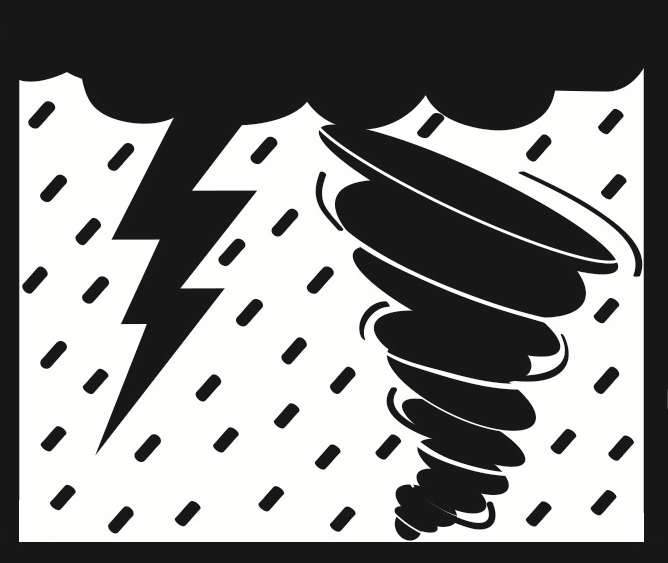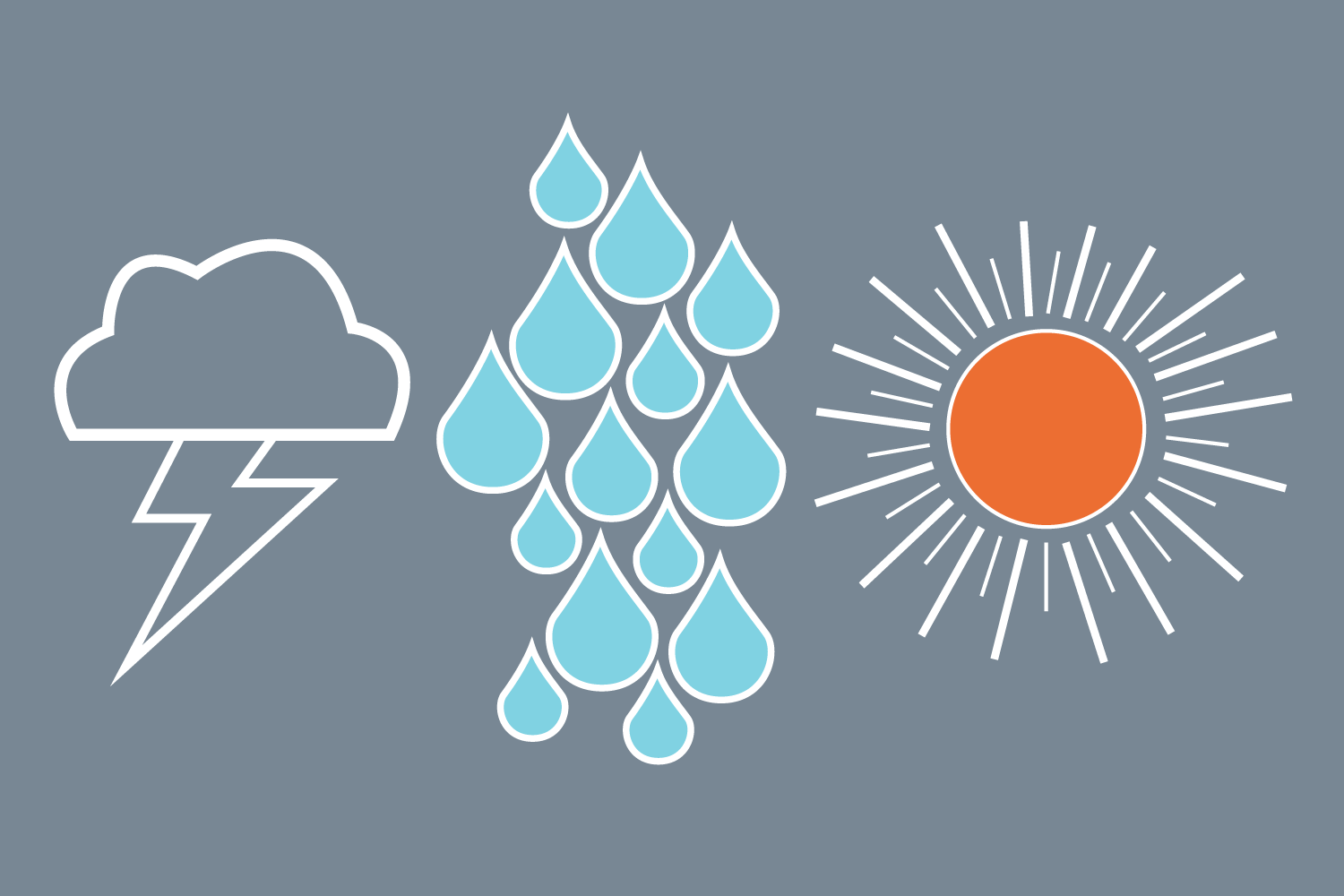
The weather conditions in South Florida can quickly change with little or no notice. Severe thunderstorms have the potential to produce a number of hazards that can pose a threat to life and property. Be prepared for flooding, lightning, and/or tornados which may occur during any severe weather event.

Current Weather
Coral Gables Campus
Medical Campus
RSMAS Campus
Action Guidelines
- Go to or stay inside a solid structure.
- Be alert to flying or falling objects.
- Stay away from windows, mirrors, glass, and unsecured objects.
- Proceed to a fully enclosed central hallway of the building, or a closed room with no windows.
- Do not use elevators.
- If requested, assist persons with disabilities to the safest area on the same floor.
- Refer to the sections below for incident specific information.
Flooding:
- Protect your area with sand bags, barriers, or other absorbent materials.
- Move to a higher floor in your building or evacuate to higher ground.
- Avoid driving or walking through standing or fast-moving water.
Lightning:
- When thunder roars, go indoors! Seek shelter in a substantial building or a hard-topped vehicle with the windows closed.
- Stay inside until 30 minutes after you hear the last clap of thunder.
- The Coral Gables campus utilizes Thor Guard Lightning Prediction and Warning Systems to monitor the atmosphere and evaluate for the potential threat of lightning within the area. If lightning is predicted to occur within 2.5 miles of campus, a siren will sound and a strobe light will remain flashing until safe conditions return.
- 1 long siren blast = Lightning imminent, immediately seek shelter.
- 3 short siren blasts = All clear, resume normal activities.
Tornados:
- Go into an interior room or hallway on the lowest floor, if possible.
- Stay away from windows, doors, and outside walls.
- A vehicle or modular building does not provide good protection. Plan to go quickly to a building with a strong foundation, if possible.
- If shelter is not available, lie flat in a ditch or other low-lying area. Do not get under an overpass or bridge. You are safer in a low, flat location.
- Stay in the shelter location until the danger has passed.





